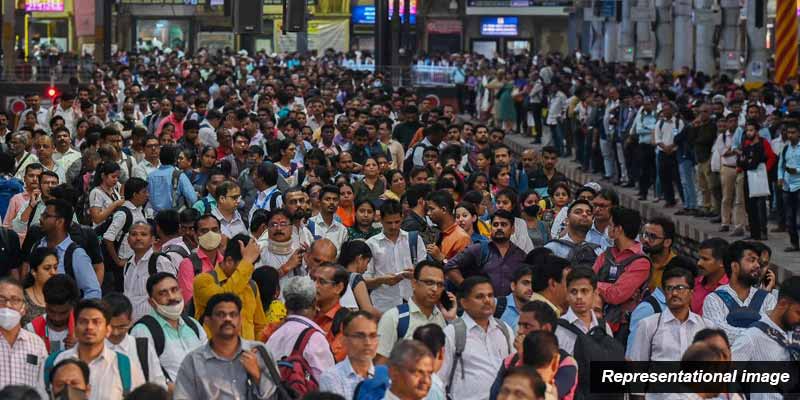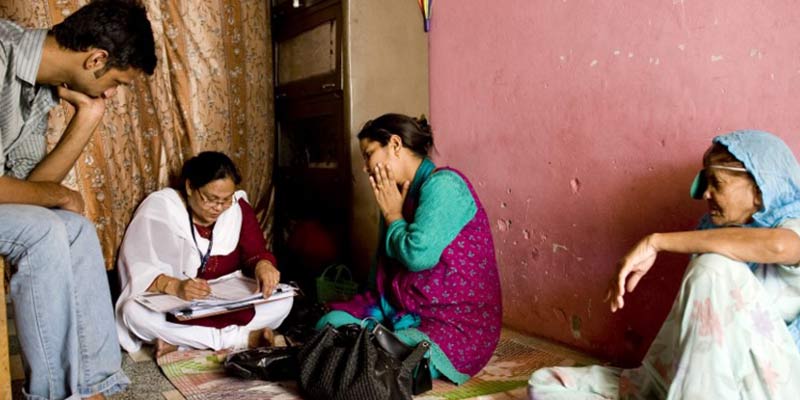- India
- Jun 05
- Sreesha V.M
Govt announces schedule of Census along with caste enumeration
• The Ministry of Home Affairs announced that the Population Census-2027 will be conducted in two phases along with the enumeration of castes.
• The 16th Census with caste enumeration will be carried out in 2027 with the reference date of October 1, 2026 in snow-bound areas like Ladakh and of March 1, 2027 in the rest of the country.
• The previous Census was in 2011.
• The population of the country as per the Census 2011 was 121.19 crore of which 62.37 crore (51.54 per cent) were males and 58.64 crore (48.46 per cent) were females.
Census
• The Census of India is conducted under the provisions of the Census Act, 1948 and the Census Rules, 1990.
• The Census is the largest single source of a variety of statistical information on different characteristics of the people of India conducted on the basis of the Census Act.
• The Census is the basis for reviewing the country’s progress in the past decade, monitoring the ongoing schemes of the government and plan for the future.
• The Census provides detailed and authentic information on demography, economic activity, literacy and education, housing and household amenities, urbanisation, fertility and mortality, Scheduled Castes and Scheduled Tribes, language, religion, migration, disability besides others.
• The enumerators also collect data related to cultivators and agricultural labourers, their sex, occupational classification of workers in non-households industry, trade, business, profession or service by class of worker and sex.
• There will be a detailed survey on gender and literacy rate, number of towns, slum households and their population.
• Information is also collected on sources of potable water, energy, irrigation, method of farming, whether a house is concrete, thatched or others.
• This reliable, time-tested exercise has been bringing out a veritable wealth of statistics beginning from 1872 when the first Census was conducted in India non-synchronously in different parts.
• The government decided in May 1949 to initiate steps for developing systematic collection of statistics on the size of population, its growth, etc, and established an organisation in the Ministry of Home Affairs under Registrar General and ex-Officio Census Commissioner, India.
• This organisation was made responsible for generating data on population statistics, including vital statistics and Census. Later, this office was also entrusted with the responsibility of implementation of Registration of Births and Deaths Act, 1969.
Census 2027
• The entire Census exercise is likely to cost the government over Rs 13,000 crore.
• Over 30 lakh enumerators and their supervisors are likely to be engaged to carry out the mega exercise.
• Even though the reference dates for the Census are October 1, 2026 (for snow-bound areas) and March 1, 2027 (for rest of India), the house listing phase is likely to start by April 2026.
• Prior to that, the enumerators and supervisors will be given training for the smooth conduct of the exercise.
• This will also be the first digital census giving the citizens an opportunity to self-enumerate.
• The last Census was conducted in 2011 in two phases: Phase I of House Listing (HLO) from April 1 to September 30, 2010) and Phase II of Population Enumeration (PE) (February 9 to 28, 2011).
• Census 2021 was also proposed to be conducted in two phases with phase I during April-September 2020 and the second phase in February 2021.
• All preparations for the first phase of the Census to be conducted in 2021 were completed and the fieldwork was scheduled to begin in some States/UTs from April 1, 2020.
• However, due to the outbreak of the COVID-19 pandemic across the country, the census work was postponed.
What is caste census?
• As per Article 246 of the Constitution of India, Census is a Union Subject listed at 69 in the Union List in the Seventh Schedule.
• Some states like Bihar, Telangana and Karnataka have conducted surveys to enumerate castes.
• A caste census involves the systematic collection of data on the caste identities of individuals during a national census exercise. In India, where caste has historically shaped social, economic, and political dynamics, such data can provide insights into the demographic distribution, socio-economic conditions, and representation of various caste groups. This information can be used to inform policies on affirmative action, reservations, and social justice.
What is its historical context?
• The British colonial administration included caste enumeration in census exercises conducted every decade between 1881 and 1931. These surveys categorised the population by caste, religion, and occupation, providing detailed demographic data. The exercise was partly driven by the colonial need to understand and govern India's complex social structure.
• After India gained independence in 1947, the first census of independent India in 1951 marked a significant departure. The government, under then Prime Minister Jawaharlal Nehru, decided to discontinue caste enumeration except for Scheduled Castes (SCs) and Scheduled Tribes (STs). This decision was rooted in the belief that focusing on caste could perpetuate divisions and hinder national unity in a newly independent nation.
• A decade later, in 1961, the central government allowed states to conduct their own surveys to prepare state-specific lists of Other Backward Classes (OBCs). This was in response to demands for affirmative action for socially and educationally backward groups beyond SCs and STs. However, no nationwide caste census was undertaken.
• In 2011, the UPA government conducted the Socio-Economic and Caste Census (SECC), the first attempt since 1931 to collect caste data nationwide. However, the caste data from SECC 2011 was never fully released or utilised, leading to criticism from opposition parties and caste-based organisations.
Significance of caste census?
• The inclusion of caste data in the upcoming census is poised to have far-reaching implications for governance, electoral politics, and India’s ongoing struggle with inequality.
• A caste census is more than a demographic exercise. It is a politically charged issue with deep social implications.
• The inclusion of caste in the census could have far-reaching implications for reservation policies, political representation, and social justice initiatives.
• It may also reshape electoral strategies, as parties vie for support from various caste groups.
• Much of access to essential services in India — like education, healthcare, nutrition, and social protection — is shaped by structural inequalities of caste, region, religion, and economic status.
• A caste census is critical to uncover these intersectional disparities and to design policies and programs that are truly equitable and inclusive, said activists.
• Accurate caste data can help tailor affirmative action policies, such as reservations in education and jobs, to address current socio-economic disparities.
• Many consider caste census essential to identify and uplift marginalised communities.
• However, people also warn that it could entrench caste identities and deepen divisions.
(The author is a trainer for Civil Services aspirants.)


